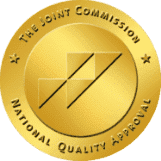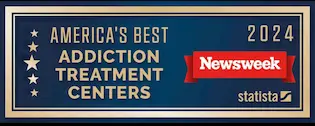Opioid Withdrawal Symptoms
Opioid Withdrawal Symptoms
Opioid Withdrawal Symptoms
Learn about opioid withdrawal symptoms and what you can do to overcome this type of substance abuse.

Article Contents
What is Withdrawal?
Opioids are a class of drugs typically used to treat pain. These drugs are also highly addictive and can cause physical dependence. When people who are physically dependent on opioids cut back or stop using the drug, they may experience an unpleasant set of opioid withdrawal symptoms.
Physical Dependence
Once an individual becomes reliant on an opioid, it’s difficult for the body to function well without the drug. This class of drugs causes physical dependence because the substance binds to receptors on nerve cells located within the central nervous system (CNS). The CNS includes the spinal cord, brain, and other nerve pathways that send messages to the brain.1
Find Help Now
Because opioids impact the nervous system, the senses and body systems undergo adjustments during the opioid substance withdrawal process. For individuals experiencing opioid substance withdrawal, the process can be challenging. Drug withdrawal treatment can reduce the distressing symptoms that may occur.2
What to Expect During Withdrawal
The opioid withdrawal symptoms usually start about twelve hours after the drug was last used, depending on the person’s past drug use and the type of drug used. Most opioid withdrawal symptoms peak within thirty-six to seventy-two hours after the drug was last used, and last about seven to ten days.3
Common Withdrawal Symptoms
The following are a list of the most common symptoms: 3
- Changes in temperature
- Chills
- Goosebumps
- Increased sensitivity to pain
- Insomnia
- Stomach cramps
- Nausea
- Vomiting
- Diarrhea
- Rapid pulse
- High blood pressure
- Anxiety
- Irritability
- Fatigue
Withdrawal Without Medical Help
Opioid withdrawal symptoms may be uncomfortable — and perhaps even painful — but they are typically not life-threatening. That said, a life-threatening situation can occur during this process. The Food and Drug Administration (FDA) advises against sudden discontinuation of opioid drugs. Rapidly decreasing an opioid drug may result in extensive psychological distress, uncontrolled pain, and suicide.4
Furthermore, substance withdrawal without medical assistance can pose health hazards or lead to relapse. Serious medical problems can occur with individuals who have pre-existing conditions.
For example, high blood pressure during opioid withdrawal can exacerbate heart conditions. Dehydration and hypernatremia may develop due to excessive sweating and vomiting. Individuals who inject opioids are more likely to experience extreme discomfort during substance withdrawal. Therefore, although substance withdrawal can be performed at home, it is usually not advisable.5
What is the Brain Reward System?
Opioids also boost the release of a “feel good” hormone, dopamine. Dopamine impacts the brain reward system pathway within the brain, causing a rush of euphoria. Consistent or repeated use of opioids causes drug tolerance because more of the drug is necessary to create the same effect — resulting in physical dependence.
Once opioid use decreases or stops, the brain seeks out more dopamine, and the body flushes out toxins from its drug use, resulting in distressing symptoms of substance withdrawal.
Anti-Reward System
Besides the brain reward system, another reward system exists — the anti-reward system. This anti-reward system keeps the “feel-good seeking” brain reward system in check by releasing a neurotransmitter that blocks dopamine. By blocking dopamine, the brain shuts down the reward system and allows you to manage your pleasure-seeking behavior. Opioid substance abuse and other substance use disorders negatively impact this anti-reward pathway, making resisting drugs and substance withdrawal.5
Medications Used to Treat Withdrawal of Common Substances

When performed under the supervision of a healthcare professional, there are more options available to make opioid withdrawal safer and more comfortable. Depending on what opioid an individual is addicted to, many medications help opioid withdrawal symptoms.
However, opioids are not the only drugs where sudden discontinuation may be problematic. Common substances like Prozac, an antidepressant, may result in Prozac withdrawal symptoms including irritability and nightmares. Managing Prozac withdrawal by gradually tapering the amount used reduces the likelihood of these adverse effects.6
The most common medications used for substance withdrawals are described below.
Medication for Heroin Withdrawal
Most medications offered during heroin withdrawal are also prescribed to treat withdrawal from other opioids. Methadone, for example, is a well-known medication used almost exclusively for opioid addiction, including heroin.7 Buprenorphine and naltrexone are drugs similar to methadone and used in much the same manner. Incorporating these medications into the withdrawal process can prevent distressing withdrawal effects.8
Medications for Alcohol Withdrawal
Alcohol withdrawal poses dangers that are substance-specific, and severe alcohol withdrawal can be a life-threatening situation. The sudden cessation of heavy alcohol consumption may result in delirium tremens (DTs). DTs are a medical emergency, and the person in withdrawal may experience seizures and hallucinations.9
Acamprosate and disulfiram are drugs used to discourage alcohol consumption. They help prevent a heavy drinker from consuming alcohol, reducing cravings during the alcohol withdrawal process.10 Clonidine is a drug used to help manage these uncomfortable symptoms.11
Medications for Meth Withdrawal
Methamphetamine is a synthetic stimulant. The drugs commonly used for the meth withdrawal process include modafinil, paroxetine, and Remeron.12 Modafinil provides help to mitigate the effects of methamphetamine withdrawal, like excessive fatigue. Remeron, on the other hand, is an antidepressant that aid in countering the mood swings that can accompany meth withdrawal.13
Medication for Benzodiazepines Withdrawal
Benzodiazepines, known commonly as benzos, are a class of drugs called depressants because they cause sedation. Stopping benzodiazepine use all at once can result in serious medical problems, making benzo withdrawal potentially dangerous.
For example, Xanax withdrawal can result in seizures. Therefore, the medications clonazepam or diazepam may be prescribed to help an individual gradually taper their benzodiazepine addiction. Zolpidem is not a benzodiazepine but has effects similar to benzos, making it another option to use during the benzo withdrawal process. These medications can cause severe symptoms from Xanax withdrawal and withdrawal from other benzodiazepines less likely.14
Therapy Used to Treat Withdrawal
Having as much support as possible can make all the difference when it comes to opioid substance withdrawal. Dialectical behavioral therapy (DBT), cognitive-behavioral therapy (CBT), and motivational interviewing are all therapy modalities to improve a person’s withdrawal and drug treatment experience.15
Cognitive-behavioral therapy and dialectical behavioral therapy are psychotherapy methods that train individuals to explore and modify their thoughts, emotions, and behaviors. Motivational interviewing is a communication style, by encouraging a person to strengthen their commitment to a goal.16
Further Treatment for Withdrawal
Opioid withdrawal symptoms are challenging to manage, but the recovery process is not impossible. Medication-assisted treatment (MAT), including using meds like methadone or naltrexone, allows individuals to taper their drug use with minimal substance withdrawal symptoms.
Residential treatment facilities offer around-the-clock drug withdrawal and treatment services on-site, with health professionals and staff experienced at managing substance use disorders. Dealing with drug withdrawal symptoms alone can be dangerous. With some help, people experiencing opioid withdrawal symptoms can come out the other side healthy and recovering.17
Resources
- https://www.biologicalpsychiatryjournal.com/article/S0006-3223(19)31435-0/pdf
- https://medlineplus.gov/ency/article/000949.htm
- https://onlinelibrary.wiley.com/doi/full/10.1111/jcpt.13114
- https://pubmed.ncbi.nlm.nih.gov/32199668/
- https://www.fda.gov/drugs/drug-safety-and-availability/fda-identifies-harm-reported-sudden-discontinuation-opioid-pain-medicines-and-requires-label-changes
- https://www.medicalnewstoday.com/articles/prozac-withdrawal
- https://www.drugabuse.gov/download/21349/medications-to-treat-opioid-use-disorder-research-report.pdf?v=99088f7584dac93ddcfa98648065bfbe
- https://psychiatry.uams.edu/clinical-care/cast/what-is-naltrexone/
- https://www.health.harvard.edu/a_to_z/alcohol-withdrawal-a-to-z
- https://medlineplus.gov/druginfo/meds/a682602.html
- https://www.medscape.com/viewarticle/742191_4
- https://www.nami.org/About-Mental-Illness/Treatments/Mental-Health-Medications/Types-of-Medication/Mirtazapine-(Remeron)
- https://www.ncbi.nlm.nih.gov/pmc/articles/PMC4657308/
- https://www.nami.org/About-Mental-Illness/Treatments/Psychotherapy
- https://motivationalinterviewing.org/understanding-motivational-interviewing
- https://www.nami.org/About-Mental-Illness/Treatments/Treatment-Settings




